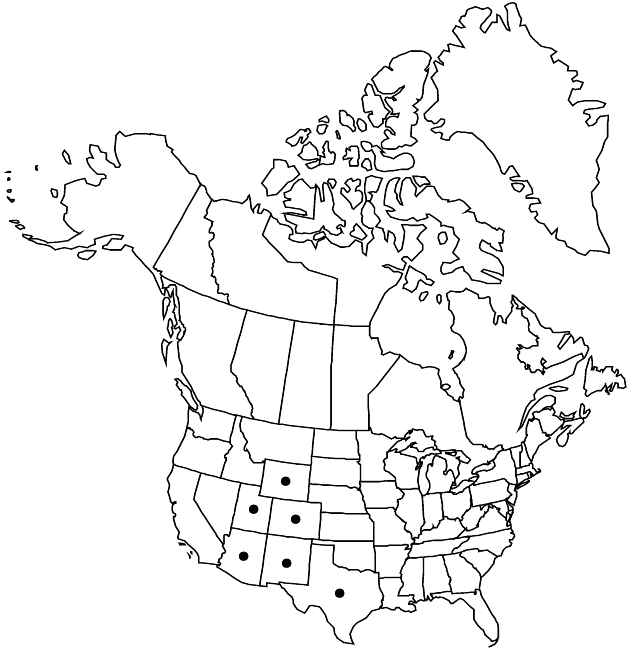Difference between revisions of "Erigeron eximius"
Pittonia 3: 295. 1898.
FNA>Volume Importer |
imported>Volume Importer |
||
| (3 intermediate revisions by 2 users not shown) | |||
| Line 8: | Line 8: | ||
}} | }} | ||
|common_names=Spruce-fir fleabane | |common_names=Spruce-fir fleabane | ||
| + | |special_status={{Treatment/ID/Special_status | ||
| + | |code=E | ||
| + | |label=Endemic | ||
| + | }} | ||
|basionyms= | |basionyms= | ||
|synonyms={{Treatment/ID/Synonym | |synonyms={{Treatment/ID/Synonym | ||
|name=Erigeron superbus | |name=Erigeron superbus | ||
|authority=Greene ex Rydberg | |authority=Greene ex Rydberg | ||
| + | |rank=species | ||
}} | }} | ||
|hierarchy=Asteraceae;Asteraceae tribe Astereae;Erigeron;Erigeron eximius | |hierarchy=Asteraceae;Asteraceae tribe Astereae;Erigeron;Erigeron eximius | ||
| Line 36: | Line 41: | ||
-->{{#Taxon: | -->{{#Taxon: | ||
name=Erigeron eximius | name=Erigeron eximius | ||
| − | |||
|authority=Greene | |authority=Greene | ||
|rank=species | |rank=species | ||
| Line 50: | Line 54: | ||
|publication title=Pittonia | |publication title=Pittonia | ||
|publication year=1898 | |publication year=1898 | ||
| − | |special status= | + | |special status=Endemic |
| − | |source xml=https:// | + | |source xml=https://bitbucket.org/aafc-mbb/fna-data-curation/src/2e0870ddd59836b60bcf96646a41e87ea5a5943a/coarse_grained_fna_xml/V19-20-21/V20_761.xml |
|tribe=Asteraceae tribe Astereae | |tribe=Asteraceae tribe Astereae | ||
|genus=Erigeron | |genus=Erigeron | ||
Latest revision as of 20:05, 5 November 2020
Perennials, 15–60 cm; rhizomatous, fibrous-rooted, caudices or primary rhizomes slender, simple or branched, usually producing slender, herbaceous, scale-leaved stolons bearing terminal leaf tufts. Stems erect to ascending, usually glabrous, sometimes sparsely hirsuto-pilose proximal to heads, densely minutely glandular to nearly eglandular. Leaves basal (persistent) and cauline; basal blades spatulate to elliptic-spatulate (to oblanceolate-obovate), 30–150 × 9–35 mm, cauline gradually reduced distally (bases usually clasping to subclasping), margins entire or serrulate to mucronulate with 3–5 pairs of teeth, faces glabrous, distal often glandular. Heads 1–5(–15). Involucres 7–9 × 11–19 mm. Phyllaries in 3–4 series (often purplish), usually glabrous, sometimes sparsely villous at bases, minutely glandular. Ray florets 40–80; corollas white to bluish or lavender, 12–20 mm, laminae coiling. Disc corollas (3.6–)4–5.8 mm. Cypselae 1.8–2.5 mm, 2(–4)-nerved, faces sparsely strigose; pappi: outer of setae, inner of 20–30 bristles. 2n = 18, 36.
Phenology: Flowering Jul–Oct.
Habitat: Margins or openings, pine, aspen, spruce-fir, subalpine meadows
Elevation: 2300–3500 m
Distribution

Ariz., Colo., N.Mex., Tex., Utah, Wyo.
Discussion
Erigeron eximius apparently sometimes forms intermediates with E. formosissimus.
Selected References
None.